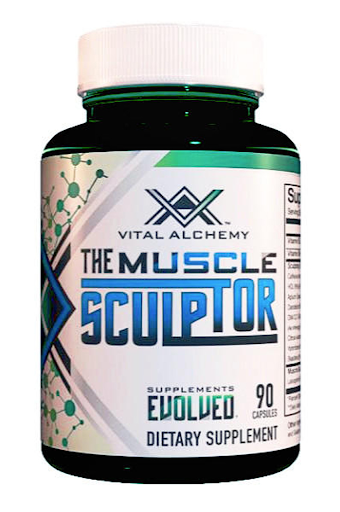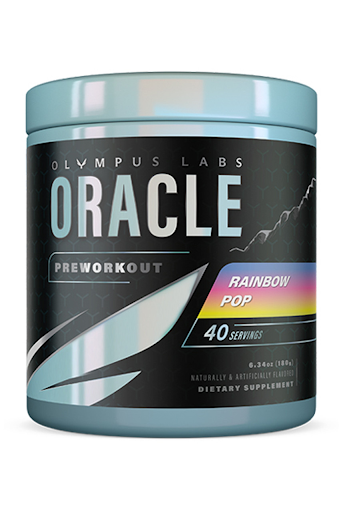In the ever-evolving landscape of fitness and weight loss, the allure of quick and effortless solutions often takes center stage. Among these solutions, fat burners have emerged as a popular option, promising to rev up metabolism, melt away excess pounds, and sculpt a leaner physique. With catchy slogans and enticing marketing claims, fat burner supplements have piqued the curiosity of many individuals striving to shed unwanted weight. But amidst the promises and hype, a fundamental question lingers: Do these fat burners truly live up to their claims?
In this exploration into the world of fat burners, we embark on a journey through scientific research, delving deep into the mechanisms, ingredients, and evidence that underpin the effectiveness of these supplements. While the prospect of a magic pill to effortlessly burn fat may be alluring, the truth lies in a nuanced understanding of the science behind these products. As we navigate through the complexities of metabolism, thermogenesis, and appetite regulation, we’ll uncover whether fat burners are indeed the weight loss solution they’re often touted to be.
Understanding Fat Burners:
Table of Contents
Fat burners have taken the health and fitness industry by storm, promising to aid in the battle against stubborn body fat and accelerate weight loss. But what exactly are fat burners, and how do they work? In this section, we’ll delve into the intricacies of fat burners, exploring their various categories and shedding light on the key ingredients that often play a role.
Defining Fat Burners and Exploring Categories:
At their core, fat burners are dietary supplements designed to assist in the process of burning fat, either by increasing metabolic rate, enhancing thermogenesis, or reducing appetite. These supplements are available in various forms, including capsules, powders, and even ready-to-drink beverages. They often contain a blend of natural compounds, vitamins, minerals, and herbal extracts that are believed to influence the body’s energy expenditure and fat utilization.
Fat burners can be broadly categorized into several types:
- Thermogenic Fat Burners: These fat burners work by increasing the body’s core temperature, which in turn boosts metabolism and calorie expenditure. This category often includes ingredients like caffeine, capsaicin (found in chili peppers), and green tea extract.
- Appetite Suppressants: These fat burners focus on reducing cravings and appetite, leading to decreased food intake and, subsequently, a calorie deficit. Common ingredients include glucomannan, 5-HTP, and certain plant extracts.
- Fat Blockers and Carb Blockers: These fat burners aim to hinder the absorption of fats and carbohydrates from the diet, reducing the overall calorie intake. Chitosan and white kidney bean extract are examples of such ingredients.
- Metabolism Boosters: This category of fat burners focuses on enhancing the body’s basal metabolic rate, which contributes to increased calorie burning even at rest. B-vitamins, green tea extract, and specific herbal extracts often fall into this category.
Key Ingredients Found in Fat Burners:
Several ingredients frequently appear in the formulations of fat burners, each with its own purported mechanism of action:
- Caffeine: A well-known stimulant that can increase metabolic rate and enhance energy levels, potentially leading to greater calorie expenditure.
- Green Tea Extract: Rich in compounds called catechins, green tea extract is believed to boost metabolism and increase fat oxidation.
- Capsaicin: Found in chili peppers, capsaicin may increase thermogenesis and fat oxidation, albeit to a modest extent.
Fat Burners as Supplements, Not Magic Pills:
It’s essential to understand that fat burners are not magical solutions that guarantee rapid weight loss without effort. While they can complement a comprehensive weight loss strategy, they are just one piece of the puzzle. Sustainable weight loss is achieved through a combination of healthy eating, regular physical activity, proper hydration, and adequate sleep.
When considering fat burners, it’s important to approach them with realistic expectations. They can potentially provide a slight edge by enhancing metabolism or appetite control, but they’re not substitutes for a balanced diet and active lifestyle. Before incorporating fat burners into your routine, consult a healthcare professional to ensure they’re suitable for your individual needs and health status.
Mechanisms of Fat Burners:
Fat burners operate on a fascinating array of physiological mechanisms, each aiming to contribute to the overarching goal of weight loss. These mechanisms revolve around the concepts of boosting metabolism, triggering thermogenesis, and curbing appetite. In this section, we’ll unravel these intricate processes and their implications for achieving effective fat loss.
Increasing Metabolism:
Metabolism refers to the complex series of chemical reactions that occur within our bodies to sustain life and maintain bodily functions. When we talk about increasing metabolism in the context of fat burners, we’re essentially referring to elevating the rate at which the body burns calories. A higher metabolic rate translates to more energy expenditure, even when at rest.
Fat burners often contain ingredients such as caffeine and certain herbal extracts that have stimulant properties. These compounds can lead to a temporary increase in metabolic rate by stimulating the central nervous system. This increase can result in higher calorie expenditure over the course of a day, contributing to a potential calorie deficit, which is essential for weight loss.
Enhancing Thermogenesis:
Thermogenesis is the process by which the body generates heat. In the context of fat burners, thermogenesis is particularly interesting because it expends calories in the form of heat production. Certain ingredients found in fat burners, such as capsaicin from chili peppers, and compounds from green tea extract, have been shown to induce thermogenesis.
Capsaicin, for instance, binds to receptors in the body responsible for sensing heat. This interaction triggers an increase in energy expenditure and the breakdown of stored fat for fuel. Similarly, green tea extract contains catechins that can enhance thermogenesis, leading to greater calorie burning.
Reducing Appetite:
One of the challenges in weight loss journeys is controlling appetite and food cravings. Fat burners aimed at appetite reduction often contain ingredients that promote feelings of fullness or satiety. These ingredients can help individuals consume fewer calories by making them feel less hungry and less likely to overeat.
Glucomannan, a soluble fiber derived from the root of the konjac plant, is an example of an ingredient used in fat burners for its appetite-suppressing effects. When consumed, glucomannan absorbs water and expands in the stomach, creating a sense of fullness. This can lead to reduced food intake, ultimately contributing to weight loss efforts.

Metabolism and Weight Loss:
The relationship between metabolism and weight loss is intricately intertwined. Metabolism dictates the number of calories the body burns to maintain its functions. When you consume fewer calories than your body expends (a calorie deficit), your body turns to stored fat as an energy source, leading to weight loss.
However, it’s important to note that while fat burners can influence metabolism and promote thermogenesis, their effects might not be as dramatic as often advertised. Sustainable and effective weight loss occurs when these mechanisms are combined with healthy eating habits and regular physical activity. Relying solely on fat burners without addressing other lifestyle factors is unlikely to yield significant, lasting results.
Scientific Evidence: What Research Says:
The allure of fat burners lies in their potential to amplify weight loss efforts through metabolic enhancement and fat oxidation. To truly understand their effectiveness, we turn to scientific studies that have investigated the impact of common fat burner ingredients. In this section, we’ll explore the findings of research on these ingredients, shedding light on their effects on metabolism and fat loss.
Caffeine and Metabolic Boost:
Caffeine, a central nervous system stimulant found in many fat burners, has been extensively studied for its potential to increase metabolic rate. Research indicates that caffeine can indeed have a short-term effect on metabolism, leading to a modest increase in calorie expenditure. This effect is attributed to its ability to stimulate the release of adrenaline and norepinephrine, which can temporarily elevate heart rate and energy expenditure.
Green Tea Extract and Fat Oxidation:
Green tea extract, rich in catechins, has garnered attention for its role in enhancing fat oxidation. Studies have shown that the catechins in green tea can promote the breakdown of stored fat for energy. These compounds may also contribute to improving insulin sensitivity, which can have implications for weight management.
Capsaicin and Thermogenesis:
Capsaicin, the compound responsible for the spicy kick in chili peppers, has been investigated for its thermogenic effects. Research suggests that capsaicin can increase energy expenditure and stimulate the body to burn more calories. It achieves this by activating receptors in fat cells that release stored fat to be used as fuel.
Study Limitations and Considerations:
While the findings of studies on fat burner ingredients are promising, it’s important to acknowledge the limitations that often accompany such research. Many studies are conducted over short periods, making it challenging to determine the long-term effects of these ingredients on weight loss and overall health. Additionally, the effects observed might vary based on factors like dosage, individual response, and the presence of other dietary and lifestyle factors.
Small sample sizes are another common limitation in these studies, which can affect the reliability and generalizability of the results. Moreover, the quality of research can vary, with some studies being sponsored by supplement manufacturers, potentially introducing bias into the findings.
Balancing Expectations and Realities:
While the scientific evidence does suggest potential benefits of fat burner ingredients on metabolism and fat loss, it’s crucial to manage expectations. The effects of these ingredients are generally modest and should be seen as supplementary to a well-rounded weight loss strategy. Sustainable weight loss requires a comprehensive approach that includes a balanced diet, regular physical activity, and a focus on overall health.
Before incorporating fat burners into your routine, consider consulting a healthcare professional. They can provide personalized guidance based on your individual health status and weight loss goals with the help of best pre workout supplements along with fat burner. Remember that fat burners are just one piece of the puzzle and should be combined with other healthy habits for the best results.
Caffeine and Green Tea Extract:
Among the myriad of ingredients found in fat burners, caffeine and green tea extract stand out as two of the most widely recognized and studied components. Let’s delve into the science behind these ingredients, exploring how they influence metabolism and fat oxidation, and outlining the considerations you should keep in mind.
Caffeine: Boosting Metabolism and Energy Expenditure
Caffeine, a natural stimulant present in various beverages and supplements, has gained a reputation for its ability to enhance metabolism and temporarily increase energy expenditure. This effect stems from its ability to stimulate the central nervous system, leading to heightened alertness and a brief spike in metabolic rate.
Research indicates that caffeine can increase the rate at which the body burns calories, potentially contributing to weight loss efforts. This effect is particularly noticeable in the short term, as caffeine’s impact on metabolism tends to diminish with prolonged use as the body develops a tolerance.
Green Tea Extract: Igniting Fat Oxidation and Beyond
Green tea extract, derived from the leaves of the Camellia sinensis plant, contains a group of compounds known as catechins, with epigallocatechin gallate (EGCG) being the most prominent. EGCG has been a focal point of research due to its potential to influence fat oxidation.
Studies suggest that green tea extract, through its catechins, may enhance fat oxidation by increasing the utilization of stored fat for energy. Moreover, EGCG may contribute to improved insulin sensitivity, which can have a positive impact on weight management and overall metabolic health.
Dosage and Precautions:
When considering the inclusion of caffeine and green tea extract in your regimen, it’s important to approach dosage with moderation and mindfulness. Dosages can vary widely among different fat burner products, so reading labels and following recommended guidelines is essential.
For caffeine, a common dose of around 100-200 mg is often used to achieve its metabolic-boosting effects. However, individual responses to caffeine can vary significantly, with some individuals experiencing jitters, increased heart rate, or sleep disturbances even at lower doses. Monitoring your body’s response is crucial, especially if you’re sensitive to caffeine or have certain health conditions.
In the case of green tea extract, doses containing about 500-1000 mg of total catechins, with a significant portion being EGCG, have been used in studies. As with any supplement, it’s wise to start with a lower dose to assess your tolerance before increasing.

The Holistic Approach:
While caffeine and green tea extract show promise in contributing to fat loss efforts, it’s crucial to underscore that they are not a panacea. These ingredients are most effective when integrated into a broader weight loss strategy that includes a balanced diet and regular physical activity. Furthermore, it’s wise to consult a healthcare professional before introducing supplements, especially if you have preexisting health conditions or are taking other medications.
Remember, the journey towards sustainable weight loss is a marathon, not a sprint. Patience, consistency, and a comprehensive approach are the keys to achieving your goals in a healthy and lasting manner.
Individual Variability and Considerations:
When it comes to fat burners, a key aspect that often gets overlooked is the significant variability in individual responses. Our bodies are remarkably unique, influenced by genetics, lifestyle, and overall health. As we navigate the landscape of fat burner supplements, it’s crucial to understand that what works effectively for one person might yield different outcomes for another.
Genetics and Metabolic Response:
Genetic factors can influence how our bodies respond to certain ingredients found in fat burners. Some individuals might have a heightened sensitivity to caffeine, leading to pronounced effects on metabolism and energy levels. Others might process certain compounds differently, altering the expected outcomes. Genetics also play a role in determining how efficiently our bodies metabolize and utilize fat, which can impact the overall effectiveness of fat burners.
The Place of Fat Burners in a Healthy Lifestyle:
The path to achieving and maintaining a healthy weight is paved with habits that stand the test of time. Fad diets and quick-fix solutions might yield short-term results, but they often lack the sustainability needed for lasting success. Instead, focus on cultivating habits that nourish your body, nurture your mind, and align with your long-term goals.
Balanced Nutrition: Prioritize a diet rich in whole, nutrient-dense foods. Incorporate a variety of fruits, vegetables, lean proteins, whole grains, and healthy fats into your meals. Strive for a well-rounded intake of vitamins, minerals, and essential nutrients that support your energy levels, metabolism, and overall health.
Regular Physical Activity: Engage in physical activity that you enjoy, whether it’s brisk walking, dancing, swimming, or strength training. Regular exercise not only burns calories but also improves cardiovascular health, builds muscle, and boosts your mood. Aim for consistency rather than intensity, gradually increasing your activity levels over time.
Mindful Eating: Practice mindful eating by paying attention to hunger and fullness cues. Avoid eating out of boredom or emotions. Savor your meals, eat slowly, and listen to your body’s signals to prevent overeating.
Hydration and Rest: Stay hydrated throughout the day, as thirst can sometimes be mistaken for hunger. Also, prioritize quality sleep, as inadequate sleep can disrupt hormones that regulate appetite and metabolism.
Conclusion
In the quest for a healthier, more vibrant life, the allure of fat burners has captured the attention of many seeking a shortcut to weight loss. However, as we’ve delved into the science, mechanisms, and considerations surrounding fat burners, a clear picture emerges: these supplements are not a standalone solution. They are but a fragment of a much larger tapestry of factors that contribute to effective and sustainable weight management.
































